SUPPORT
This page contains answers to commonly-asked questions about ENIGMAcoutstics, our line of products as well as information on our proprietary SBESL™ (Self-biased ESL) techonlogy.
General
What is a super tweeter, and how can it enhance my musical experience?
Each human voice and each musical instrument has an overtone spectral array that gives them their special character. A piano playing A below middle C sounds like a piano, while a saxophone playing that same note sounds like a saxophone, all because of the delicate harmonic signature unique to each instrument. It is their overtones—multiples of the fundamental tone-- that provide the personality and rich intonation of an instrument or voice, the sense of warmth, shrillness, air, color, or vibrancy. The inability to reproduce these ultra-high frequencies (believe it or not, even those beyond human hearing) can have a slight numbing effect on music, and make it sound more like reproduced music and less like being immersed in an environment where we are listening to a live event.
A well designed super tweeter, such as our Sopranino, not only captures what many aren’t even aware they’re missing, but in restoring the charisma of music’s harmonics, listeners will be surprised by how much more midrange delineation they will hear as a result. Less haze and more focus. Music is presented less as a collage and more as specific sounds populating the stage in front of the listener and extending beyond the speakers themselves. There’s an unmistakable sense that ambience is being restored.
A super tweeter specializes in the overtone region, typically covering frequencies above 10 kHz--a range that usually carries a small amount of energy in real time. It reproduces those minimal yet critical signals and provides a nearly complete harmonic regeneration, all the while being insulated from mechanical vibration or any other forms of distortion induced by the main loudspeakers. And with super tweeters, since they are not attached to the main speakers, their angle can be adjusted separately thus allowing optimization of the soundstage.
Think of a super tweeter as functioning like a sub-woofer, just at the other end of the frequency spectrum.
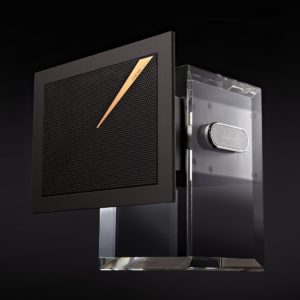
Why an ENIGMAcoustics self-polarizing electrostatic super tweeter?
All of the viable technologies for extending high frequency response – ribbon, mini metal dome, piezo-electric ceramic, ionic plasma, and the rarely-mentioned electrostatic – quote response numbers to beyond 20kHz. But in auditioning them with music, one speaker type seems to consistently stand out and rise above all the rest. Not surprisingly it is the electrostatic. There’s something special about electrostatics, and it isn’t just their extended high frequency response. They have a subjective effortlessness, a transparency, and focus that have enchanted listeners for decades. Utilizing an almost massless thin film membrane, they have long been regarded as the Holy Grail, and what they do as magic. This is why we chose to do electrostatic loudspeakers, and why we chose to make our super tweeter an electrostatic.
The logical question, then, is why are there so few electrostatic super tweeters on the market. The short answer is because of cost and complexity. But there is another factor. The cumbersome requirement for an external source of polarizing voltage—the need to plug them into an AC mains receptacle, or to use an external energizer to accomplish this--has been a deal breaker for many would-be purchasers, and an obstacle that has limited their acceptance.
It is here that we has made a major contribution—one that is significant and arguably ground-breaking. Over the span of years of intense development, we designed and refined a proprietary self-biasing technology called SBESL™ in which the polarizing voltages for the electrostatic elements are derived from the audio signal itself. This of course eliminates the need for an external source of bias voltage, and the cumbersome requirement for additional wiring in the set-up. So electrostatic performance can be realized in all its sonic purity without the hassle of one of the roadblocks for many consumers. And Sopranino is the only super tweeter on the market to utilize this now patented SBESL™ technology.
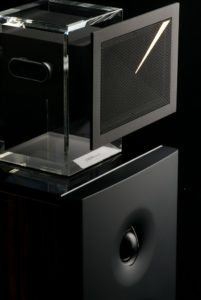
How long has the ENIGMAcoustics been in business?
ENIGMAcoustics was founded in 2012, and grew out of a vision and a passion for music. We’re a company made up of audio enthusiasts, who collectively have decades of audio design, engineering and marketing experiences, bound together by an appreciation for electrostatics and the special qualities they possess.
The development of our patented self-biased electrostatic (SBESL™) technology was a milestone that marked the creation of the company - where ideas and things abstract became a business. First implemented in the Sopranino electrostatic super tweeter, SBESL™ technology is a common thread running through all our speaker products. From the Sopranino to the Mythology M1 and now to the Dharma D1000, these products have received, and continue to receive, accolades from customers for their transparency, ease of implementation, and their ability to connect listeners to the magic of electrostatic sound.
In late 2015, we launched our first portable products - the Dharma D1000 electrostatic/dynamic hybrid stereo headphone, and the Athena A1 pure Class A vacuum tube hybrid headphone amplifier. These are audio enthusiast products in every respect, and represent the logical extension of a philosophy that has been in place since ENIGMAcoustics’ inception five years ago.
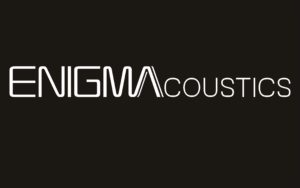
Where is ENIGMAcoustics located?
Our company headquarters and base of operations is in Brea, California, approximately 25 miles east of Los Angeles. The bulk of our products are manufactured under contract in Taiwan. However, management, administration, inventory, new product definition, accounting, shipping, sales, and marketing all take place at company headquarters in the United States.

Products
What products does ENIGMAcoustics offer? 
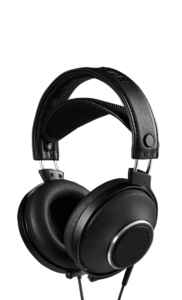
1. Sopranino was the company’s first product, and the first product ever to utilize SBESL™ (Self-Biased Electrostatic) technology. Launched in 2013, it immediately caused a stir. Sopranino received a significant amount of attention in print, got great reviews, was greeted with enthusiasm by consumers and dealers alike. Sopranino and our SBESL™ technology also became the building blocks and the technical underwriting for ENIGMAcoustics products that have followed.
2. Mythology M1 Hybrid Electrostatic Mini-Monitor
A year after the market launch of Sopranino, the Mythology M1 made its first appearance. As the second product to utilize SBESL™ (Self-Biased Electrostatic) technology, Mythology M1 is a seamless blend of two way stand mount monitor and the Sopranino electrostatic super tweeter. Configured as an augmented 2-way design, with only a high pass filter used in the transition between the electrostatic element and the dome mid/HF driver, there is the phase linearity of two way system, the advantages of a 3- way design, and the magic of electrostatic transparency, focus, and sonic purity.
3. Dharma D1000 Hybrid Electrostatic Headphone
Utilizing ENIGMAcoustics’ patented SBESL™ (Self-Biased Electrostatic) technology, Dharma delivers the sonic magic of an electrostatic without the need for an external source of a bias voltage. This allows Dharma, unlike other electrostatic headphones, to be used with any headphone amplifier. It is a lightweight, comfortable electrostatic headphone that utilizes a proprietary Washi paper diaphragm for bass and mid-bass reproduction, and a phase linear high pass filter to imperceptibly transition it to the electrostatic tweeter.
4. Athena A1 Hybrid Vacuum Tube Headphone Amplifier
The Athena A1 is a true audiophile single-ended triode vacuum tube hybrid headphone amplifier. It, like Dharma, benefits from two technologies, blended in a hybrid configuration to utilize the strengths of each. Athena employs a single-ended triode vacuum tube front end, running in Pure Class A, and a low impedance Class-A MOS/BJT hybrid output stage. It has the high input impedance and pristine sound quality of a vacuum tube design, with the high current, low output impedance, and slam of a well-designed solid state amplifier. This allows Athena to drive both high and low impedance headphones.
What about the selection of parts to work in conjunction with ENIGMAcoustics electrostatic drivers?
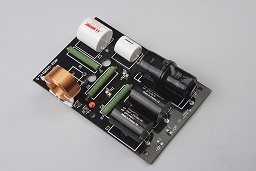
We use only tight-tolerance premium grade parts in our products, both electrical and mechanical. We carefully select parts based on their sound quality and reliability. Inspecting our crossover networks for example, reveals highly regarded brand-name parts of known quality, hand matched for precision performance, assembled with care. You will only find materials of superior quality, finish, and mechanical integrity in our products.
Are vacuum tube amplifiers compatible with ENIGMAcoustics electrostatic and hybrid electrostatic speakers?
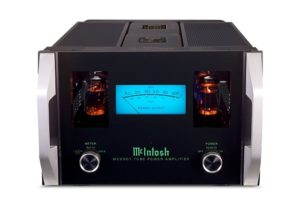
Yes. Absolutely. A high quality vacuum tube amplifier with moderate power should be fully capable of driving our speakers. In fact, ENIGMAcoustics electrostatic and hybrid electrostatic products will reveal the sonic colors and nuanced musicality of your electronics to a greater extent than ever thought possible.
How is Sopranino connected to a full range loudspeaker?
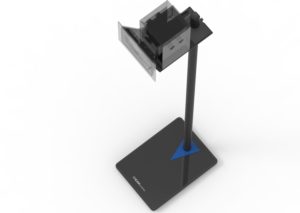
By simply connecting Sopranino’s two speaker terminals via high quality audio cables in parallel to your main speakers' terminals. In a bi-wire set-up, connect Sopranino in parallel with the main speaker’s HF terminals.
It is perfectably normal to encounter loudspeakers that are 1) without tweeter at the highest position and/or a flat top surface, 2) possess extreme height and/or girth, 3) with unorthodox design that is either aesthetically and/or acoustically driven.
In such cases, it is key to remember Sopranino's unique characteristics allow users abundant of freedom to integrate them into any of the above-mentioned scenarios with a simple solution in order to accomplish the goal of projecting critical harmonics to the “sweet spot”.
And that solution? A pair of speaker stands.
There are, of course, plenty of well made and designed and speaker stands that are readily available. Nevertheless, after numerous inquiries and requests from motivated business partners and an eager public since the introduction of our groundbreaking super tweeter, we decided to create speaker stands that are aesthetically up to ENIGMAcoustics’ standards and yet acoustically and mechanically recognizable by audiophiles everywhere.
Every piece of component selected is compact and slim for visual and placement considerations, but inherently solid in order to achieve the best mechanical strength and level of acoustic transparency. Capturing the spirit of high-end audio, only the best raw materials were sourced, with the design focus emphasized on every detail of machinery finish with the highest precision and delicacy.
The (optional) custom 7-position height-adjustable (from approx. 36” to 48”) speaker stands for Sopranino is an elegant yet straightforward approach – with a very modest footprint of 13”x10” – and the perfect high-end option for consumers to integrate Sopranino into any speaker system when all else fails. Simply stated, it’s an incredible combination of beauty and accessibility.
How do you fine tune the interface between Sopranino and a full range speaker?
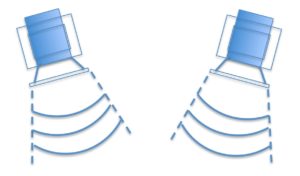
Sopranino’s interface with a full range speaker is adjustable via two controls. First, there is gain switch, providing 0 dB or -3 dB level settings. If the full range loudspeaker, for example, is low in sensitivity, the -3dB setting will likely be the more appropriate choice.
And as a flat panel sound source with tuning based on spectral density, the second control (knob) on Sopranino’s rear allows the user to adjust this parameter by selecting one of three high-pass filter settings—8kHz, 10kHz, or 12kHz. If a system demands more high frequency energy, the user can lower the high-pass crossover frequency, which brings Sopranino into the musical equation earlier (at a lower frequency) and channels more information through it. On the other hand, if a system seems to have too much high frequency energy, adjustment in the other direction is recommended—raising the high-pass crossover frequency. The factory default setting is 10kHz.
- Do I have to use the Mythology M1 Hybrid Electrostatic monitor with its dedicated stand?
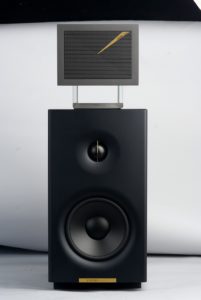
No. Our stand happens to be a no holds barred assault on the best you can do with today’s materials and technology. It is massive, beautifully finished; it has great coupling properties for the Mythology, and places the speaker at just the right height for listening. You are not limited to our stand, though, and are welcome to use a stand of your own choosing.
- How difficult is the Dharma D1000 to drive?
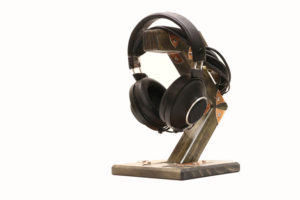
Unlike other electrostatic headphones, Dharma can be driven by virtually any headphone amplifier. With its high resolution, though, Dharma will shine when used with a high quality, transparent headphone amp. Electrostatic headphones, such as Stax, Koss, King Sound, and others all require an external voltage source to deliver a polarizing voltage to charge the electrostatic diaphragm. This voltage source is accompanied by a dedicated amplifier, which means the headphone ‘system’ includes an amp. As a result you don’t have the opportunity to shop, listen, and choose an amplifier of your liking.
Dharma utilizes our patented SBELS™ (Self-Biased Electrostatic) technology to untether the headphone from an external voltage source and dedicated amplifier. In the true spirit of high-end audio, Dharma allows you to choose your amplifier without reservation. And adding to its compatibility with a wide range of headphone amplifiers, Dharma also has a friendly 26 Ohm impedance and a very high 103 dB sensitivity. It can even be driven by an iPhone.
- How compatible is the Athena A1 with low impedance headphones? High impedance headphones?
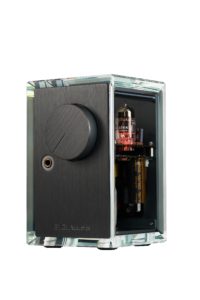
Athena’s output stage exhibits high current and an extremely low output impedance, which ensures compatibility with low impedance headphones; and its high output voltage swing allows Athena A1 to effortlessly drive high impedance headphones as well. You will not be limited in your choice of headphones for the Athena A1’s. You can take advantage of Athena’s transparency, its nuanced and delicate rendering of music with a wide range of headphones, even the most hard to drive.
Do I have to use the Mythology M1 Hybrid Electrostatic monitor with its dedicated stand?

No. Our stand happens to be a no holds barred assault on the best you can do with today’s materials and technology. It is massive, beautifully finished; it has great coupling properties for the Mythology, and places the speaker at just the right height for listening. You are not limited to our stand, though, and are welcome to use a stand of your own choosing.
How difficult is the Dharma D1000 to drive?

Unlike other electrostatic headphones, Dharma can be driven by virtually any headphone amplifier. With its high resolution, though, Dharma will shine when used with a high quality, transparent headphone amp. Electrostatic headphones, such as Stax, Koss, King Sound, and others all require an external voltage source to deliver a polarizing voltage to charge the electrostatic diaphragm. This voltage source is accompanied by a dedicated amplifier, which means the headphone ‘system’ includes an amp. As a result you don’t have the opportunity to shop, listen, and choose an amplifier of your liking.
Dharma utilizes our patented SBELS™ (Self-Biased Electrostatic) technology to untether the headphone from an external voltage source and dedicated amplifier. In the true spirit of high-end audio, Dharma allows you to choose your amplifier without reservation. And adding to its compatibility with a wide range of headphone amplifiers, Dharma also has a friendly 26 Ohm impedance and a very high 103 dB sensitivity. It can even be driven by an iPhone.
How compatible is the Athena A1 with low impedance headphones? High impedance headphones?
 Athena’s output stage exhibits high current and an extremely low output impedance, which ensures compatibility with low impedance headphones; and its high output voltage swing allows Athena A1 to effortlessly drive high impedance headphones as well. You will not be limited in your choice of headphones for the Athena A1’s. You can take advantage of Athena’s transparency, its nuanced and delicate rendering of music with a wide range of headphones, even the most hard to drive.
Athena’s output stage exhibits high current and an extremely low output impedance, which ensures compatibility with low impedance headphones; and its high output voltage swing allows Athena A1 to effortlessly drive high impedance headphones as well. You will not be limited in your choice of headphones for the Athena A1’s. You can take advantage of Athena’s transparency, its nuanced and delicate rendering of music with a wide range of headphones, even the most hard to drive.
Technology
What exactly is Ambience Restoration?
 Typical music halls are designed to reinforce the music they host with acoustic reflections to the rearmost seat. When recording music in smaller, less acoustically complex spaces, engineers mimic some of the effects of complex ambience with acoustic and electronic reinforcement.
Typical music halls are designed to reinforce the music they host with acoustic reflections to the rearmost seat. When recording music in smaller, less acoustically complex spaces, engineers mimic some of the effects of complex ambience with acoustic and electronic reinforcement.
The typical home (lacking the size and surfaces of a larger space) is not acoustically supportive to ambience, and the traditional narrow beam "point source" tweeters are not efficient in carrying ambience to the listener's ear. The groundbreaking Sopranino self-polarizing electrostatic super tweeter is designed to recover the ambience present in all recordings.
Sopranino, in essence, is a large area "Ultra Tweeter" operating at the highest octaves with a radiating area of close to 30 times the typical 1" dome tweeter. Sopranino's unique characteristics (the only permanently polarized electrostatic radiator) allow "ambience recovery" to multiple listeners' ears over a much larger/wider "sweet spot" when compared to conventional speaker systems.
While representing the first-of-its-kind ARD or ambience restoration device, Sopranino "decodes" the precious gloss and luster latent in all recordings and fills in, both acoustically and emotionally, the voids in the radiation patterns of conventional speakers.
Therefore, Sopranino is not by any means a typical super tweeter. It does not provide artificial details and unnatural high frequencies, but effectively delivers ambience while only adding a touch of "sparkle" to the high end of the most well designed tweeters.
The combination of unparalleled phase and time coherency with a large radiation area results in a natural experience with none of the fatigue of aggressive high end systems. Since this "Sopranino Effect" is so unique (it supports the ultimate in L/R and multichannel systems) one must hear this device to appreciate the emotional satisfaction and joy latent in one's music library.
Does Sopranino change the load that the amplifier sees relative to that of the speaker it is being used with?
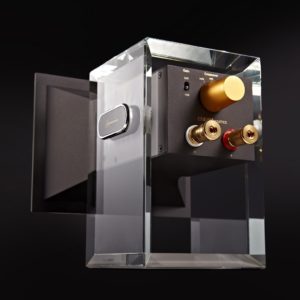
Our first-of-its-kind self-polarizing electrostatic super tweeter doesn't operate at full-range (from 8kHz and up), therefore integrating Sopranino into any existing two-channel speaker system is like a butterfly landing on a leaf. Its contribution to the overall load impedance is negligible.
For years we took on the daunting task of enabling our proprietary SBESL™ technology to its full potential. We patented stator materials and its structure design after numerous changes; developed new spacer materials, completely re-designed driver circuits and introduced a specialized custom transformer; and added a one-of-a-kind protection circuit.
Only then did we proceed to begin the painstaking task of rigorous testing to ensure Sopranino's optimal performance and reliability.
What are the power requirements for the Mythology M1 Hybrid Electrostatic monitor?
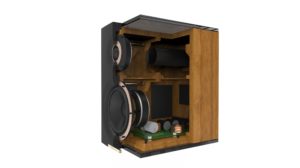 Mythology M1 has very stable impedance characteristics and a simple crossover network. For most listening, It only requires a high quality amplifier with recommended output power greater than 50W.
Mythology M1 has very stable impedance characteristics and a simple crossover network. For most listening, It only requires a high quality amplifier with recommended output power greater than 50W.
What is the Mythology M1 Hybrid Electrostatic monitor’s impedance?
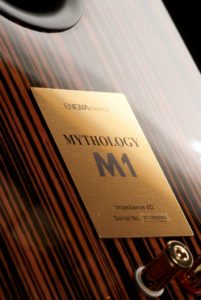 Its nominal impedance is 4 Ohms, with a minimum impedance only slightly below its 4 Ohm nominal impedance—a very easy load to drive.
Its nominal impedance is 4 Ohms, with a minimum impedance only slightly below its 4 Ohm nominal impedance—a very easy load to drive.
What are the crossover frequencies and filter characteristics of the Mythology M1?
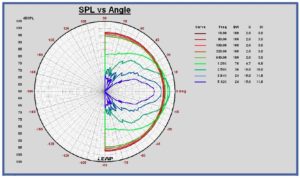 The Mythology M1 represents a significant step forward in mini monitor loudspeaker design. The most striking, and telling, aspect of its design is the seamless blending of dynamic drivers with an electrostatic super tweeter in an augmented 2-way configuration. The transition between the dynamic components and the electrostatic tweeter is accomplished via a phase coherent first order crossover, simplified to allow the soft dome mid / HF driver to roll off acoustically, with no inductive reactance to electrically taper its response. The result is incredible transparency, inner detail, and enhanced ambience retrieval.
The Mythology M1 represents a significant step forward in mini monitor loudspeaker design. The most striking, and telling, aspect of its design is the seamless blending of dynamic drivers with an electrostatic super tweeter in an augmented 2-way configuration. The transition between the dynamic components and the electrostatic tweeter is accomplished via a phase coherent first order crossover, simplified to allow the soft dome mid / HF driver to roll off acoustically, with no inductive reactance to electrically taper its response. The result is incredible transparency, inner detail, and enhanced ambience retrieval.
Crossover between woofer and mid / HF driver is at an unheard of 1,100Hz. The super tweeter augments the two dynamic drivers beginning at 8kHz, with a high pass, but no low pass filter components. The result is extended phase coherent response, and the behavior of a 2-way system.
What electronics do you recommend for use with your speakers?
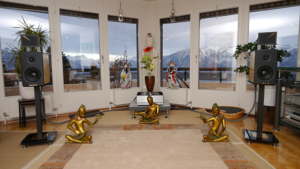 We get asked this a lot. But the plain simple answer is that our speaker products do not present difficult loads. They don’t have ‘characteristics’ that require compensation of any kind from the associated electronics. They are smooth and transparent—clear windows onto the sound—and in our experience, have produced chill bumps and tears with both vacuum tube electronics as well as solid state. One thing for sure, you’ll hear more of what your amp and preamp can do when you use them with our speakers. So choose the highest resolution electronics you can. We have used a range of electronics in our sound room, and we love to try new combinations; but rest assured we are compatible with everybody.
We get asked this a lot. But the plain simple answer is that our speaker products do not present difficult loads. They don’t have ‘characteristics’ that require compensation of any kind from the associated electronics. They are smooth and transparent—clear windows onto the sound—and in our experience, have produced chill bumps and tears with both vacuum tube electronics as well as solid state. One thing for sure, you’ll hear more of what your amp and preamp can do when you use them with our speakers. So choose the highest resolution electronics you can. We have used a range of electronics in our sound room, and we love to try new combinations; but rest assured we are compatible with everybody.
How about cables. Any preferences?
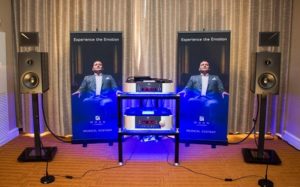 Since our speakers don’t impose a personality –a character—on reproduced music, we don’t require a complementary cable to balance the sound. You’ve all heard of using ‘bright’ cables to give life or energy to speakers whose presentation is mellow—or reticent. Warm cables to compensate for the ‘thin’ character of some speakers. Our philosophy is to make every link in the chain as natural, as neutral, and as transparent as possible. We would, therefore, recommend that you choose cables that are themselves as characterless, natural, but as revealing as possible. Make use of reviews, dealer counsel, and input from your audiophile acquaintances. We’ve found a bunch, too numerous to call out any in particular.
Since our speakers don’t impose a personality –a character—on reproduced music, we don’t require a complementary cable to balance the sound. You’ve all heard of using ‘bright’ cables to give life or energy to speakers whose presentation is mellow—or reticent. Warm cables to compensate for the ‘thin’ character of some speakers. Our philosophy is to make every link in the chain as natural, as neutral, and as transparent as possible. We would, therefore, recommend that you choose cables that are themselves as characterless, natural, but as revealing as possible. Make use of reviews, dealer counsel, and input from your audiophile acquaintances. We’ve found a bunch, too numerous to call out any in particular.
